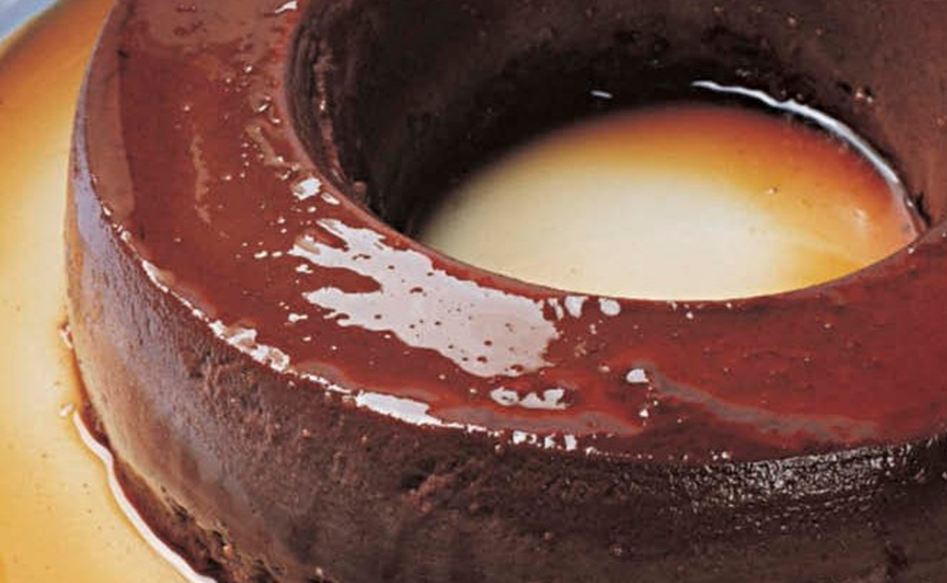Directions
Bonet: The Traditional Piedmontese Dessert
The bonet is a cherished dessert from Piedmont, famous for its rich flavor and creamy texture. This chocolate pudding, combined with amaretti cookies and Marsala wine, has delighted generations and stands as a symbol of the confectionary arts of this Italian region. In this article, we will delve into the authentic recipe, explore its variations, share tips for perfecting your preparation, and unveil fascinating tidbits about this delightful treat.
Origins and Significance of Bonet
In Piedmontese dialect, “bonet” translates to “hat.” This intriguing name is derived from the shape of the mold used to prepare the dessert, which resembles a rounded hat. While the most common version today incorporates cocoa, the original bonet alla monferrina was devoid of chocolate, containing only eggs, milk, sugar, and amaretti.
Ingredients for Traditional Bonet
To create an authentic bonet, it’s essential to use fresh, high-quality ingredients. Below is a complete list of what you’ll need for approximately 6-8 servings:
- 8 fresh eggs
- 7 dry amaretti cookies
- 1 liter of whole milk
- 3 tablespoons of unsweetened cocoa powder
- 250 grams of granulated sugar
- 1 tablespoon of Marsala wine
- Grated zest of one untreated lemon
Preparation: Step-by-Step Instructions
1. Preparing the Base
- In a large bowl, beat the egg yolks with 8 tablespoons of sugar until the mixture becomes light and frothy.
- Sift in the cocoa powder and mix until fully incorporated.
- Whip the egg whites until stiff peaks form, then gently fold them into the mixture using an upward motion.
- Add the grated lemon zest, crushed amaretti, and Marsala, mixing gently to combine.
2. Caramelizing the Mold
- Pour the remaining sugar into a pudding mold (preferably one with a central hole).
- Place the mold over low heat and allow the sugar to melt until it forms a golden caramel.
- Swirl the mold to evenly coat the bottom and sides with caramel.
3. Cooking in a Water Bath
- Pour the prepared mixture into the caramelized mold.
- Place the mold in a deep baking dish filled with hot water, ensuring the water reaches halfway up the mold’s sides.
- Bake in a preheated oven at a low temperature (around 150°C) for approximately 3 hours.
- To check if the bonet is done, insert a toothpick; if it comes out clean, your dessert is ready.
4. Cooling and Serving
- Allow the bonet to cool to room temperature.
- Transfer it to the refrigerator for at least 4 hours, preferably overnight.
- Carefully unmold the dessert onto a serving plate, taking care not to break it, and serve it chilled.
Tips for a Perfect Bonet
- Artisanal Amaretti: Choose high-quality amaretti for an authentic flavor.
- Quality Marsala: Opt for sweet or semi-dry Marsala to enhance the dessert’s aroma.
- Gentle Cooking: Do not exceed the recommended temperature to prevent a grainy texture.
- Modern Twists: For a contemporary twist, consider replacing Marsala with rum or amaretto liqueur.
Variations of Bonet
In addition to the traditional bonet, several variations cater to diverse palates:
- Bonet alla monferrina: A chocolate-free version for a milder taste.
- Bonet al caffè: Enhanced with a shot of espresso for a coffee-infused flavor.
- Vegan Bonet: Substitute milk with plant-based alternatives and use a mixture of cornstarch and silken tofu to achieve a creamy texture.
Fun Facts About Bonet
- A Noble Dessert: Bonet was often served at aristocratic banquets in Piedmont.
- Connection to the Region: The amaretti used reflect Piedmont’s confectionery tradition, especially from Mombaruzzo.
- A Christmas Tradition: Though delightful year-round, bonet is a holiday favorite in many households.
Conclusion
Creating a Piedmontese bonet is a heartfelt tribute to the authentic flavors of Italian cuisine and tradition. With this detailed guide, you can impress your guests with a sophisticated and irresistible dessert.
Frequently Asked Questions About Bonet
1. What is the difference between traditional bonet and bonet alla monferrina?
The key distinction lies in the absence of cocoa in bonet alla monferrina, which is the older version of the recipe. This type of bonet features eggs, milk, sugar, and amaretti for a gentler flavor.
2. What are the secrets to making the perfect bonet?
To achieve perfection, ensure that egg whites are whipped until stiff, use quality amaretti, and maintain low, steady heat during the cooking process. It’s also crucial to chill the dessert for at least 4 hours before serving.
3. Can I make bonet without alcohol?
Yes, Marsala can be replaced with orange juice or milk while still maintaining a rich and balanced flavor. This alternative is ideal for those avoiding alcohol, including children.
4. How long does bonet keep in the refrigerator?
Bonet can be stored in the fridge for about 3-4 days, as long as it is covered with plastic wrap or kept in an airtight container. While the flavor will remain intact, it’s best enjoyed within the first two days for maximum taste.
5. Is it possible to freeze bonet?
Absolutely! To freeze, wrap the bonet tightly in plastic wrap and place it in a freezer-safe container. Before serving, allow it to thaw in the refrigerator for several hours, preferably overnight.



